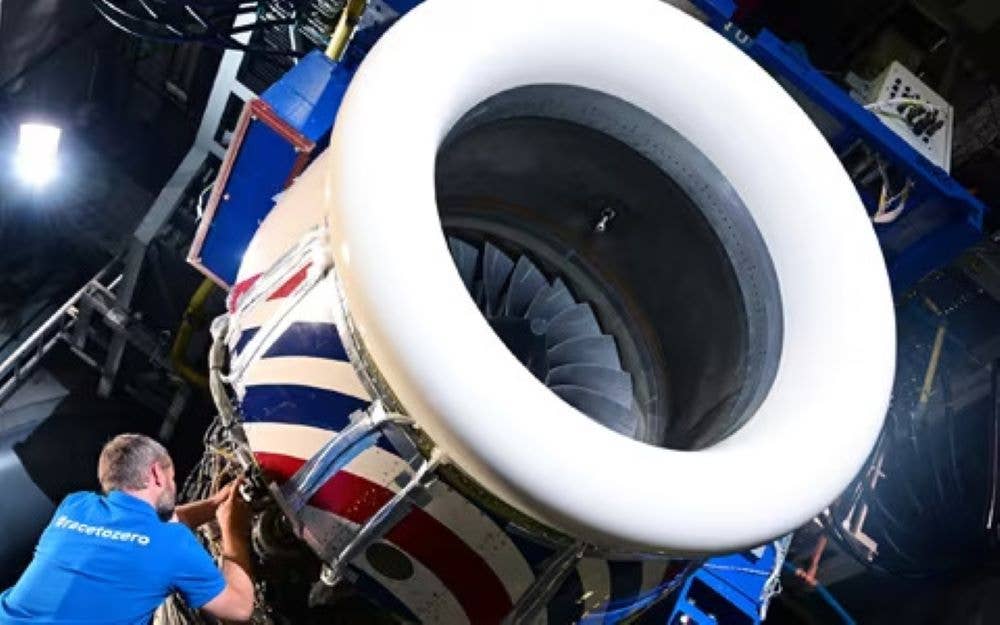Rolls-Royce Tests Pearl Engines with 100 Percent Sustainable Aviation Fuel
Company says the program reflects its desire to play a major role in reaching net-zero emissions.

Rolls-Royce recently teste its Pearl 15 and pear 10X engines using SAF. [Courtesy: Rolls-Royce]
Rolls-Royce said it successfully completed a series of tests of its Pearl 15 and Pearl 10X business aviation engines using 100 percent sustainable aviation fuel, or SAF.
The Pearl 15, which is the first member of the Pearl engine family, powers the Bombardier Global 5500 and 6500 aircraft. The Pearl 10X will be used on the Dassault Falcon 10X, the company’s ultralong-range flagship.
Rolls-Royce said the tests, which took place at the company’s business aviation headquarters in Dahlewitz, Germany, reflect its plans to “play a leading role in the journey to achieve net-zero flight by 2050.”
In addition to proving SAF’s compatibility, the tests included back-to-back test runs of a Pearl 10X engine using jet-A-1 and SAF to demonstrate environmental improvements resulting from the change to SAF.
Rolls-Royce said the hydro-processed esters and fatty acids, or HEFA, SAF used in the tests was derived from sustainable, waste-based feedstocks including cooking oils and fat waste. The fuel has the potential to cut net carbon dioxide life cycle emissions by about 80 percent compared with conventional jet fuel.
The back-to-back tests also showed that SAF burns more cleanly than fossil-based fuel while emitting lower levels of non-volatile particulate matter, or nvPM. The test results will help move SAF closer to certification, the company said.
“Sustainable aviation fuels are a key element of our sustainability strategy, as they will play an important role in decarbonizing long-haul flight,” said Dr. Dirk Geisinger, Rolls-Royce’s director of business aviation. “With its outstanding environmental performance, the Pearl family is already setting new standards in the ultralong-range corporate jet market.”

Subscribe to Our Newsletter
Get the latest FLYING stories delivered directly to your inbox






